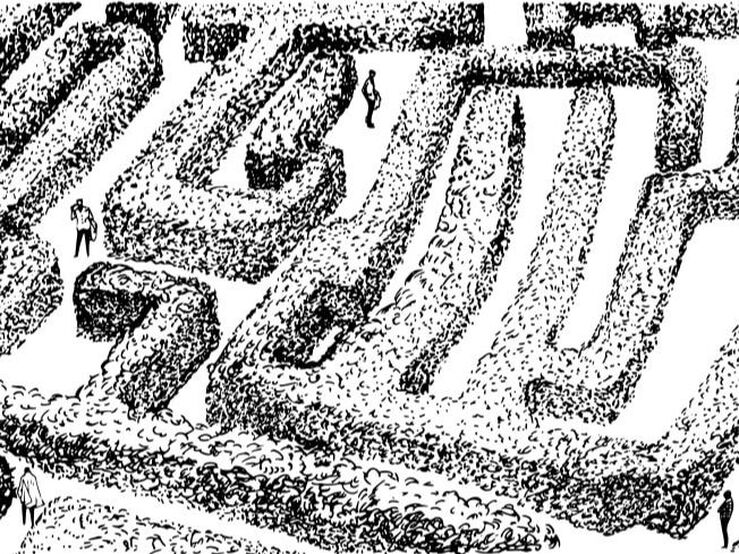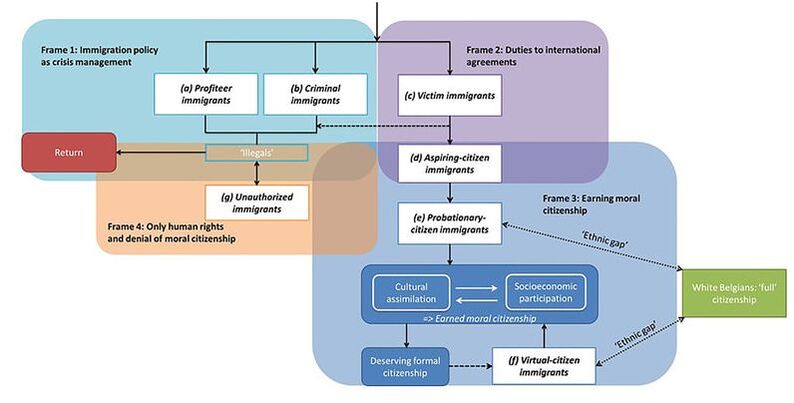|
|
|
In recent years border walls have been built in different parts of the world in order to stop irregular migration. However, barriers for migrants are not only constructed physically but also discursively in political discourses. It is known that restrictive policies in Europe are accompanied by exclusionary discourses on national citizenship for immigrants, depicting them as either ‘deserving’ or ‘undeserving’.
Empirical studies have demonstrated that the representation of immigrants and their citizenship in policies plays an important role in how these policies are received and acted upon, both by the host community and the immigrants themselves (da Lomba 2010; Stewart and Mulvey 2014). As such, studying political discourses might contribute to the understanding of the socioeconomic and political incorporation of immigrants into the host community. In the study presented in my Identities article, 'The labyrinth towards citizenship: contradictions in the framing and categorization of immigrants in immigration and integration policies', my co-author and I aimed to fully grasp how immigrants were framed in immigration policies in Belgium. Although previous studies have treated immigration and integration policies as distinct fields, we argue that a combined analysis of these two policy domains is needed in order to comprehend the full complexity of immigration policy. By mapping the different representations of immigrants in the wider policy field, we found that this is much more complex than the generally adopted contrast between deserving and undeserving suggest.
This map of discursive policy representations does not reflect a linear route towards citizenship, but instead a labyrinth filled with turns and barriers, as exemplified by the discursive categorisations and contradictions with which migrants are confronted. More concretely, within policy discourses a difference is made between various categories of newly arrived migrants, with the path for ‘criminal’ and ‘profiteer’ migrants proving to be a dead end (i.e. return). Immigrants who are initially labelled as ‘victims’ can later turn into ‘criminals’ or ‘profiteers’. If these immigrants do not subsequently return to their home countries, they are labelled as ‘unauthorised’ immigrants or ‘illegals’.
In the integration-policy discourse, this places them within a grey area, in which they are not recognised as citizens, even though they participate in society. Immigrants who are recognised as refugees arrive in the ‘probationary-citizenship’ stage, which can ultimately lead to formal citizenship when proving to be ‘good’ citizens through cultural assimilation and socioeconomic participation. Accordingly, it is theoretically possible for them to reach the exit of the labyrinth. However, it seems almost impossible for them to reach the status of ‘full citizen’, given the manner in which the citizenship of Belgian people of colour is constantly questioned (i.e. the ‘virtual-citizenship’ stage) and the participation of undocumented immigrants is not recognised. Only white Belgians are regarded as ‘full citizens’.
In addition, we unravel four contradictions characteristic of this labyrinth. First, human rights are used as an instrument of both inclusion and exclusion in the hands of national governments. Second, the citizenship of Belgian people of colour is persistently virtualised, thus serving as a reference for problematising the prospective citizenship of newly arriving immigrants. Third, the combined analysis of the policy domains of immigration and integration reveals how immigrants must be simultaneously powerless and active agents, in addition to being able to use both conditions strategically. Finally, unauthorised immigrants are also discursively positioned within a grey zone between formal exclusion and informal inclusion, with the latter remaining unrecognised by the state. These discursive contradictions have the potential to become actual barriers in the labyrinth towards citizenship.
The discursive labyrinth legitimises a wide range of policies and measures of inclusion and exclusion of immigrants. Given the persistent problematisation of the citizenship status of people of colour, we claim that this labyrinth might have no end. References: da Lomba, S. 2010. Legal status and refugee integration: a UK perspective. Journal of Refugee Studies 23: 415-436. Stewart, E. & G. Mulvey. 2014. Seeking safety beyond refuge: the impact of immigration and citizenship policy upon refugees in the UK. Journal of Ethnic and Migration Studies 40: 1023-1039.
Blog post by Rachel Waerniers, Ghent University, Belgium
Read the full article: Waerniers, Rachel & Hustinx, Lesley. The labyrinth towards citizenship: contradictions in the framing and categorization of immigrants in immigration and integration policies. Identities: Global Studies in Culture and Power. DOI: 10.1080/1070289X.2019.1590025
0 Comments
Your comment will be posted after it is approved.
Leave a Reply. |
|
Explore Identities at tandfonline.com/GIDE |
|
The views and opinions expressed on The Identities Blog are solely those of the original blog post authors, and not of the journal, Taylor & Francis Group or the University of Glasgow.


